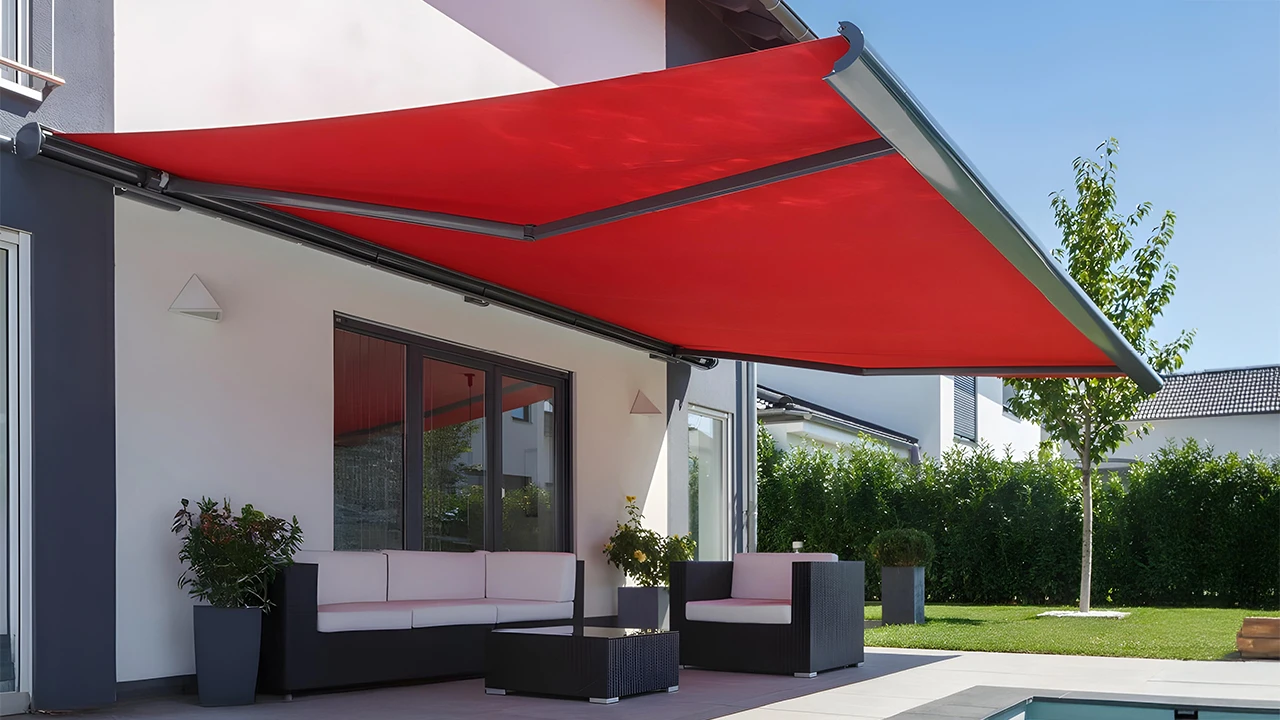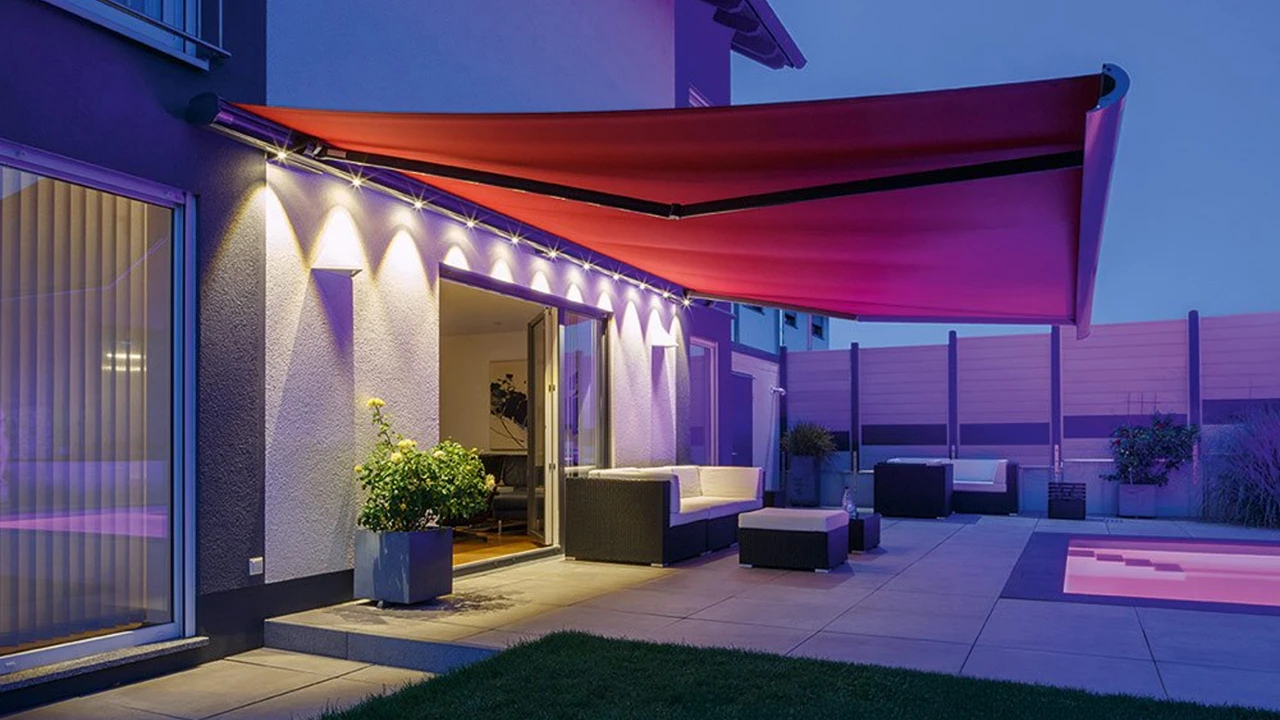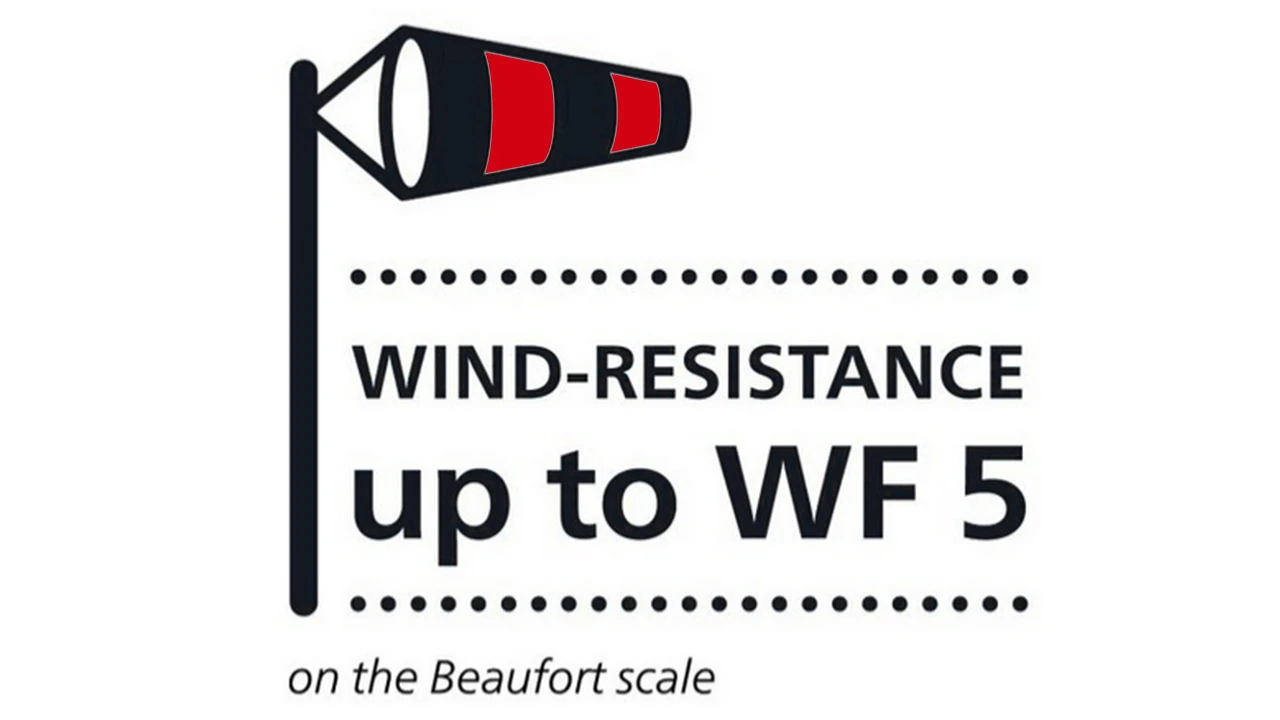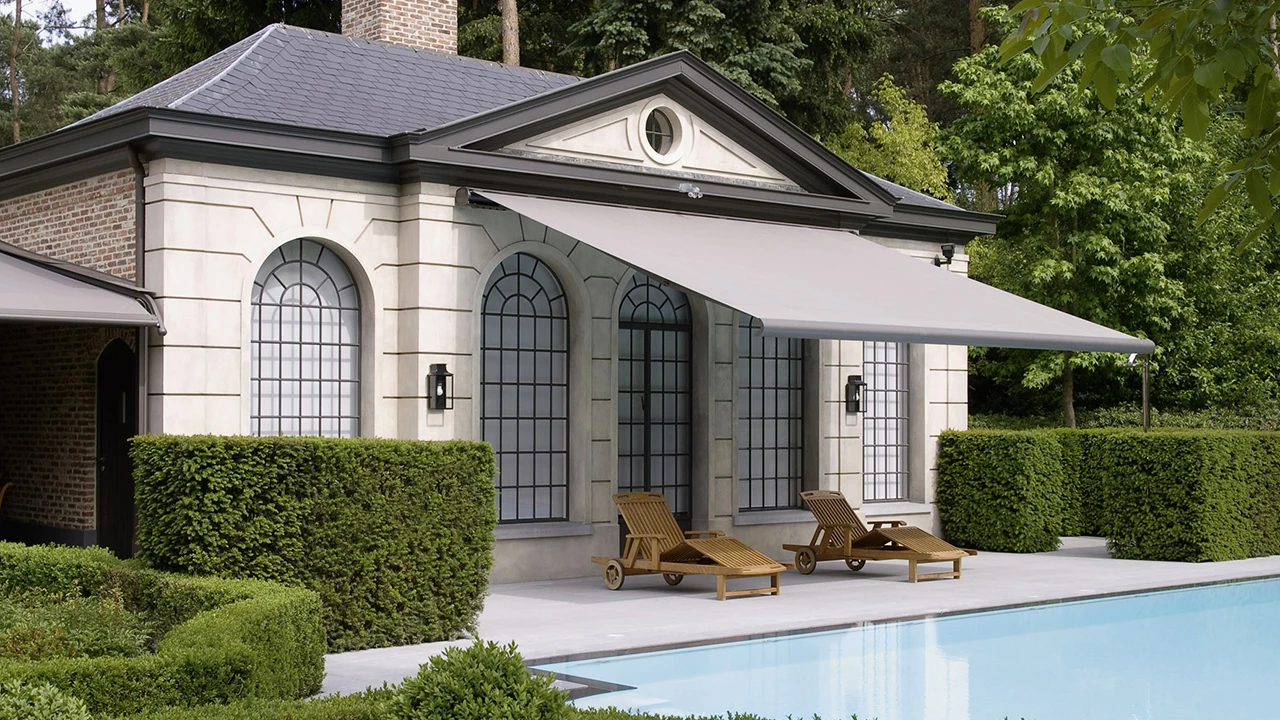The Weinor Opal Design II is a premium full cassette awning combining elegant styling with cutting-edge technology. Ideal for larger patios, it offers seamless façade integration, outstanding sun protection, and exceptional durability. Designed for both modern and traditional homes, it elevates outdoor comfort with intelligent features and sleek aesthetics.

Robust LongLife arms for wind stability, optional LED lighting, Valance Plus for comfort and privacy, and extensive colour and fabric options for custom outdoor shading.
The Opal Design II LED bathes your patio in a warm, inviting white glow, extending your outdoor enjoyment well into the evening.

Thanks to its unique, patented technology, the Opal Design II Valance Plus offers exceptional privacy along with superior protection from glare and sunlight.

When the spring-loaded clips at the ends of the front profile are visibly closed, the awning is securely shielded from dirt and the elements.

The low-noise Weinor LongLife arm is distinguished by its exceptionally high tension force, which keeps the fabric securely and precisely positioned even in blustery conditions.

The Opal Design II stands out for its superior wind resistance, effortlessly withstanding winds up to force 5 on the Beaufort scale.

Elevate your outdoor area into a relaxing, functional retreat with dependable shade and weather protection. The refined full-cassette design complements your home's exterior while protecting the awning’s components. With a broad selection of sizes, fabrics, and frame colours, it enhances your property's style and usability, offering lasting comfort and added value throughout the seasons.

Your email address will not be published. Required fields are marked *